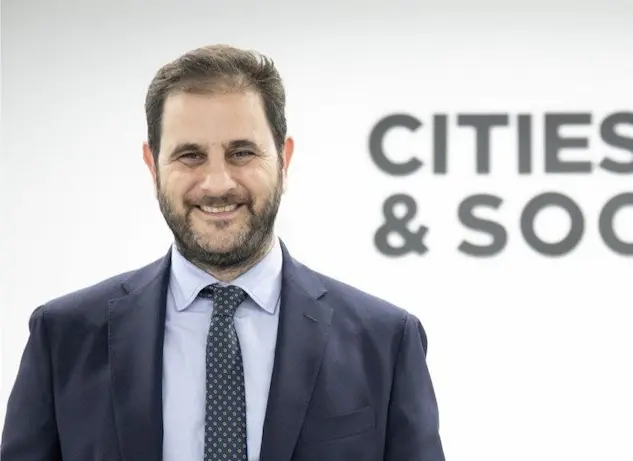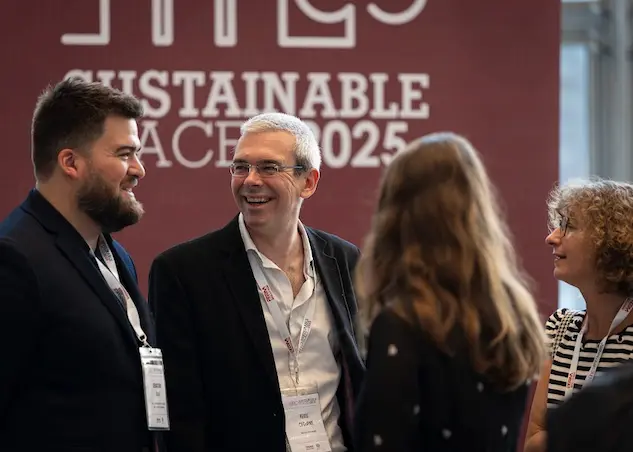The Western Balkans is entering a decisive phase in its energy transition, and few observers follow this process more closely than Inessa Shahnazarova. Founder and Executive Director of Invest In Network, she has spent the past seven years connecting global investors and technology providers with opportunities across emerging markets. Ahead of Energy Week Western Balkans 2025 in Montenegro, Inessa reflects on why this year feels like a turning point for the region — and what it will take to turn ambitious targets into reality.
A turning point for the Western Balkans
Energy Week Western Balkans 2025 has become a flagship event for the region. What makes this year’s edition particularly significant compared to previous years?
This year marks a turning point for the Western Balkans energy transition. Montenegro has just launched its first competitive renewables auction under a contracts-for-difference scheme, which has attracted significant interest from developers, lenders and advisors. Energy Week Western Balkans will be the first major gathering after this launch, so the timing could not be better for stakeholders to share insights and strategies.
On the market integration front, a significant development in 2025 has been the growing momentum to couple Western Balkan electricity markets with the EU’s internal power market — first flagged as an opportunity, now gaining real traction.
On top of these milestones, our own format has evolved. The 2025 programme in Budva brings together ministers, regulators, TSOs, utilities, developers, investors and advisors in one concentrated two-day dialogue. We have a ministerial panel on achieving 20GW of new renewables, sessions on next-generation PPAs, dedicated clinics with leading energy lawyers, and much more.
This year we are also adding an extra layer to networking. Our bespoke app is now live a full week before the event, which means participants can plan ahead and arrive with an agenda that is already full of meetings. It takes the stress out of trying to “find people in the corridor” and ensures everyone’s time is productive. What’s unchanged is that Energy Week Western Balkans has built a reputation for being one of the most consistently well-organised and carefully curated events in the sector. Some people call it “selective” and I take that as a compliment — it simply means we bring together the right mix of decision makers, which is why the conversations in Budva are always of such high quality.
One of the main goals is achieving 20 GW of new renewable capacity by 2040. From your perspective, what are the biggest opportunities and challenges to reach this target across the Western Balkans?
The opportunities are real and tangible. The combined pipeline of renewable energy projects across the Western Balkans already exceeds 20GW. Countries like Serbia and Albania have already run competitive auctions that proved investor appetite and delivered competitive pricing. In Serbia alone, the first two auction rounds have now allocated more than 1.3GW of wind and solar capacity in total, showing the scale of momentum building in the market. Montenegro has just launched its first auction, which again shows the direction of travel.
Grid infrastructure is another area of opportunity and it’s moving forward fast. A more robust grid not only enables higher penetration of renewables but also opens the way for cross-border PPAs and regional balancing.
The challenges are also clear. Developers continue to face complex and often slow permitting procedures, land-use constraints, and unpredictable grid connection processes. These hurdles must be addressed if we are to move projects from paper to steel in the ground. In addition, while auctions are proving effective, there is still a lack of bankable corporate PPA models in the region. These will be critical to diversify offtake options, especially for industries preparing for the EU’s Carbon Border Adjustment Mechanism.
Energy Week Western Balkans 2025 and the region’s new energy pathways
The agenda highlights hybrid renewable projects and grid modernisation. Where do you see the most promising examples or pilot initiatives emerging in the region?
Hybridisation and smarter grid solutions are fast becoming essential. A few examples stand out.
In North Macedonia, the Oslomej coal-to-solar repowering project shows how old fossil sites can be reimagined as hybrid renewable hubs, combining solar PV with potential storage. In Montenegro, EPCG is advancing the Gvozd wind farm and several utility-scale solar plants, which are natural candidates for hybridisation.
These kinds of projects can provide local flexibility and strengthen resilience.
The launch of the Montenegrin power exchange, alongside SEEPEX’s expansion, is another key development. Market coupling and the introduction of intraday products will make it possible to integrate batteries and flexible resources more efficiently. The EU’s guidance on anticipatory grid investment will also support regulators and TSOs in planning upgrades that enable storage and hybrid projects to flourish.
Many investors still perceive the Western Balkans as a high-risk market. What strategies does Invest In Network advocate to de-risk renewable energy projects and attract more international financing?
Every event we organise is, in a way, an investor confidence-building exercise. We see ourselves as promoters of the investment attractiveness of the regions we cover, and we don’t take shortcuts by just trying to fill a room. Our team works actively with investors all over the world who may not yet be engaged in the Western Balkans, and we try to convince them it’s worth taking a closer look.
When it comes to the Western Balkans, one of our strongest arguments is that governments are still genuinely welcoming investors. This is a market where international players are invited to participate, and that openness creates opportunities that are harder to find in more saturated markets.
In terms of strategies to de-risk renewable energy projects, predictability makes the biggest difference.
Investors need confidence that land allocation, grid connections, and permitting timelines will be handled transparently and within clear deadlines. Predictable rules, combined with the growing trend towards market integration, will go a long way in reducing perceived risks and attracting long-term capital.
The conference also touches on industrial decarbonisation and hydrogen projects. How close is the region to moving from pilot projects to large-scale deployment in these areas?
We are still at the early stages, but momentum is building. The EU’s Carbon Border Adjustment Mechanism, which begins financial obligations in 2026, is a wake-up call for the region’s export-oriented industries. Steel, cement, fertiliser and electricity producers are already working through how to adapt, and governments are preparing carbon pricing mechanisms.
On hydrogen, we are beginning to see promising moves. The Greece–North Macedonia gas interconnector is hydrogen-ready, and Albania has made headlines with a natural hydrogen discovery that is now under assessment. While these are still pilot-stage, they signal the direction of travel.
The most immediate step is to focus on “no-regret” measures: replacing fossil fuels in industry with clean electricity through PPAs, electrifying industrial processes where feasible, and building out storage and grid flexibility to support industry’s shift. Hydrogen will follow once scale and infrastructure are in place.
Opportunities, challenges, and the road ahead
Invest In Network works across diverse high-growth markets such as the Caucasus, Central Asia, and the Black Sea region. How does the Western Balkans energy transition compare to these other regions in terms of speed, ambition, and investor appetite?
The Western Balkans is in transition and definitely moving in the right direction. Investor appetite is growing, and despite the challenges, many investors see it as one regional market rather than individual countries. A developer might have projects in Serbia, Montenegro and North Macedonia at the same time. That regional approach makes sense, because once connected it becomes a market of meaningful scale, which in turn attracts more serious investors.
If we look at the Black Sea, it’s a very diverse region. Romania is clearly ahead, Bulgaria is picking up speed, Turkey already has gigawatts installed but is often seen as more isolated, Ukraine has huge potential post-war, Moldova is moving slowly but steadily, and Georgia remains a hidden gem albeit with its own challenges. What’s exciting is that people are starting to view the Black Sea region as a renewables hub, whereas in the past it was mainly associated with oil and gas.
Central Asia is a different story again. The scale is vast because of abundant land, so projects are enormous. But there are only a handful of active players, and regulatory frameworks need to develop further before we see a more diversified pipeline of foreign investors.
As an entrepreneur passionate about connecting people with opportunities, what role do you think networking and relationship-building play in accelerating the energy transition?
It is absolutely at the heart of what we do. Energy projects are complex, involving governments, regulators, utilities, developers, lenders and advisors. Without strong relationships, projects stall. With trust and the right connections, they move forward quickly.
I believe networking and relationship-building are absolutely central. We are all human and nothing replaces face-to-face interaction. I’ll never forget our first post-COVID event — it was small for obvious reasons, but the joy on people’s faces when they could meet in person again was incredible. That moment confirmed to me that conferences will never lose their place, because they are about human energy as much as business.
We put a huge emphasis on networking at Energy Week. My team and I know each and every participant by name, by company, and by their objectives. We don’t just let networking happen by chance — we actively facilitate B2B meetings and go the extra mile to make sure everyone leaves with valuable new connections.
There is also something special about the vibe of Energy Week Western Balkans. Maybe it’s the location, maybe it’s the people, but the atmosphere is unmatched. I genuinely look forward to it every year because the energy is inspiring, friendly, and unforgettable. It’s the kind of event where people not only make business partners but also lifelong friends.
Looking ahead, what emerging trends in renewable energy — whether technological, financial, or regulatory — do you believe will shape the next decade most profoundly for both the Western Balkans and global markets?
There are three that stand out.
First, storage will be everywhere. Europe installed nearly 12GW of new storage last year, and the pace is only accelerating. In the Balkans, storage will not just be a market participant but also part of the grid itself, helping manage variability.
Second, grids will come first. Without major grid reinforcement, no amount of new generation can be integrated. The Western Balkans are already investing in interconnectors and transmission upgrades, but much more will be needed to integrate 20GW of renewables.
Third, smarter contracting models. Competitive CfDs will remain the anchor for large-scale projects, but we will also see the rise of corporate PPAs, regional offtake structures, and more sophisticated risk-sharing mechanisms. This is especially important for industries under CBAM that will need long-term access to clean power.
Read and watch more interviews here


